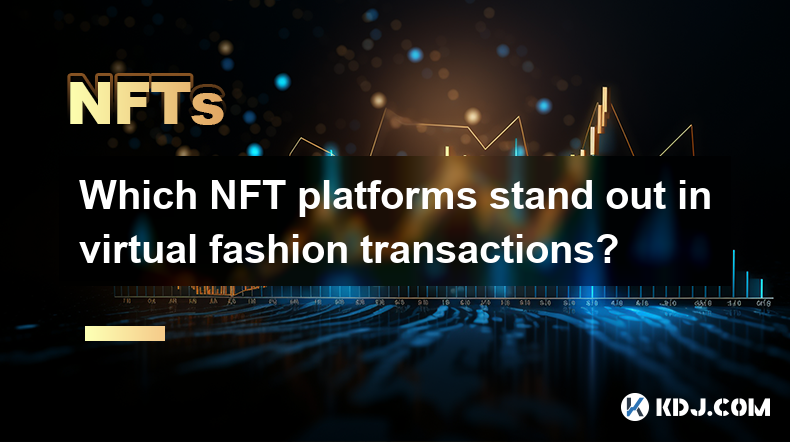-
 Bitcoin
Bitcoin $85,697.3844
1.57% -
 Ethereum
Ethereum $1,638.9615
0.39% -
 Tether USDt
Tether USDt $0.9999
0.00% -
 XRP
XRP $2.1668
2.02% -
 BNB
BNB $589.6303
0.00% -
 Solana
Solana $132.3928
-0.10% -
 USDC
USDC $1.0000
-0.01% -
 TRON
TRON $0.2521
-1.70% -
 Dogecoin
Dogecoin $0.1597
-2.28% -
 Cardano
Cardano $0.6439
0.85% -
 UNUS SED LEO
UNUS SED LEO $9.4287
0.41% -
 Chainlink
Chainlink $12.6833
-0.80% -
 Avalanche
Avalanche $20.0262
0.05% -
 Stellar
Stellar $0.2425
-0.03% -
 Toncoin
Toncoin $2.9684
4.14% -
 Sui
Sui $2.2145
-3.52% -
 Hedera
Hedera $0.1672
0.05% -
 Shiba Inu
Shiba Inu $0.0...01194
-1.99% -
 Bitcoin Cash
Bitcoin Cash $333.3345
-1.23% -
 Litecoin
Litecoin $77.8594
0.59% -
 Polkadot
Polkadot $3.7096
1.64% -
 Hyperliquid
Hyperliquid $16.3941
4.91% -
 Dai
Dai $1.0000
0.01% -
 Bitget Token
Bitget Token $4.3126
1.07% -
 Pi
Pi $0.7411
-1.42% -
 Ethena USDe
Ethena USDe $0.9991
0.02% -
 Monero
Monero $213.9141
2.70% -
 Uniswap
Uniswap $5.4003
-0.80% -
 OKB
OKB $52.2630
-1.39% -
 Pepe
Pepe $0.0...07415
0.89%
Why are NFTs called digital collectibles?
NFTs are called digital collectibles due to their uniqueness, rarity, and the way they are collected and traded, similar to physical items like stamps or art.
Apr 05, 2025 at 10:42 am

Non-fungible tokens (NFTs) are often referred to as digital collectibles due to their unique characteristics and the way they are used within the cryptocurrency and blockchain ecosystem. The term "digital collectibles" emphasizes the idea that NFTs can be collected, traded, and valued similarly to traditional physical collectibles like stamps, coins, or art pieces. This article will delve into the reasons behind this terminology, exploring the nature of NFTs, their use cases, and the cultural and economic factors that contribute to their status as digital collectibles.
What are NFTs?
NFTs are unique digital assets that are stored on a blockchain, typically Ethereum. Unlike cryptocurrencies such as Bitcoin or Ethereum, which are fungible and can be exchanged on a one-to-one basis, NFTs are non-fungible, meaning each token is distinct and cannot be exchanged on a like-for-like basis. This uniqueness is what makes NFTs suitable for representing digital collectibles. Each NFT has a unique identifier and metadata that differentiates it from other tokens, ensuring its authenticity and ownership.
The Concept of Collectibility
The concept of collectibility is central to understanding why NFTs are called digital collectibles. Collectibles are items that people gather and keep because they are rare, valuable, or have sentimental value. In the physical world, collectibles can range from baseball cards to vintage cars. Similarly, NFTs can represent a wide array of digital items, such as artwork, music, virtual real estate, and even tweets. The rarity and uniqueness of NFTs make them attractive to collectors who seek to own something exclusive and potentially valuable.
Rarity and Scarcity
One of the key reasons NFTs are considered digital collectibles is their ability to represent scarcity and rarity. In the digital world, where copying and duplicating content is easy, NFTs provide a way to create and verify the uniqueness of digital items. For example, an artist can create a limited edition series of digital artworks, each represented by an NFT. This scarcity drives demand and value, much like limited edition physical collectibles. The blockchain ensures that the ownership and authenticity of these digital items can be verified, adding to their collectible value.
Ownership and Provenance
Ownership and provenance are crucial aspects of collectibles, and NFTs excel in providing clear and verifiable records of both. Each NFT is tied to a specific owner on the blockchain, and the history of ownership (provenance) is transparent and immutable. This transparency is a significant advantage over traditional collectibles, where provenance can be difficult to verify. For collectors, knowing the history of an item and being able to prove ownership is essential, and NFTs offer this in a way that is both secure and accessible.
Cultural and Economic Value
NFTs derive their value not only from their rarity and ownership but also from cultural and economic factors. Just as certain physical collectibles gain value due to their association with popular culture or historical events, NFTs can gain value through their connection to digital culture, celebrities, or significant events in the crypto world. For instance, an NFT of a tweet by a famous personality can become highly valuable due to its cultural significance. Economically, the value of NFTs can fluctuate based on market demand, similar to traditional collectibles, making them a dynamic and potentially lucrative asset class.
Use Cases of NFTs as Digital Collectibles
NFTs have a wide range of use cases that further solidify their status as digital collectibles. Here are some examples:
Art and Design: Many artists and designers are using NFTs to sell their digital artworks. These pieces can be unique or part of a limited series, making them highly collectible.
Gaming: In the gaming industry, NFTs are used to represent in-game items such as skins, weapons, or virtual land. These items can be traded and collected, adding a new layer of value to the gaming experience.
Sports Memorabilia: NFTs are being used to create digital versions of sports memorabilia, such as trading cards featuring athletes. These digital cards can be rare and highly sought after by collectors.
Music and Entertainment: Musicians and entertainers are using NFTs to sell exclusive content, such as limited edition albums or virtual concert tickets. These items become collectible due to their exclusivity and connection to the artist.
The Role of Communities
The role of communities in the NFT ecosystem cannot be overstated. Just as collectors of physical items often form communities to share their passion and knowledge, NFT collectors form communities around specific projects or types of NFTs. These communities drive the value and popularity of NFTs, as members engage in trading, discussing, and showcasing their collections. Platforms like Discord and Twitter are central to these communities, where collectors can connect, trade, and learn about new opportunities in the NFT space.
The Impact of Technology
Technology plays a crucial role in the rise of NFTs as digital collectibles. The blockchain technology that underpins NFTs provides the infrastructure for creating, trading, and verifying these digital assets. Additionally, advancements in digital art and virtual reality have expanded the possibilities for what can be represented as an NFT. For instance, virtual reality spaces can be bought and sold as NFTs, creating new forms of digital real estate that are highly collectible.
Challenges and Criticisms
Despite their popularity, NFTs face several challenges and criticisms that are important to consider. Some critics argue that the environmental impact of blockchain technology, particularly the energy consumption associated with Ethereum, is a significant concern. Others question the long-term value and sustainability of NFTs, pointing out that the market can be driven by speculation and hype. Additionally, issues such as copyright infringement and the potential for fraud in the NFT space are areas of concern that need to be addressed to ensure the integrity and value of digital collectibles.
The Future of NFTs as Digital Collectibles
The future of NFTs as digital collectibles looks promising, with ongoing developments and innovations in the space. As blockchain technology evolves and becomes more environmentally friendly, the concerns about energy consumption may be mitigated. Additionally, the growing acceptance and integration of NFTs into various industries, from art to gaming to sports, suggest that they will continue to be a significant part of the digital economy. As more people recognize the value and potential of NFTs, the market for digital collectibles is likely to expand, offering new opportunities for creators, collectors, and investors.
Common Questions About NFTs and Digital Collectibles
Q: What makes an NFT a digital collectible?
A: An NFT becomes a digital collectible due to its unique characteristics, such as rarity, ownership, and provenance, which are recorded on the blockchain. These attributes make NFTs similar to traditional collectibles, as they can be collected, traded, and valued based on their scarcity and cultural significance.
Q: How do NFTs ensure the authenticity of digital collectibles?
A: NFTs ensure authenticity through the use of blockchain technology, which provides a transparent and immutable record of ownership and provenance. Each NFT has a unique identifier and metadata that cannot be altered, ensuring that the digital item is genuine and its ownership can be verified.
Q: Can NFTs be used for anything other than collectibles?
A: Yes, NFTs have a wide range of applications beyond collectibles. They can be used to represent ownership of digital assets in gaming, virtual real estate, music, and more. NFTs can also be used for ticketing, identity verification, and other use cases where unique digital assets are beneficial.
Q: What are some popular platforms for buying and selling NFTs?
A: Some popular platforms for buying and selling NFTs include OpenSea, Rarible, and Foundation. These platforms provide marketplaces where creators can mint and sell their NFTs, and collectors can browse and purchase digital collectibles.
Q: How do communities influence the value of NFTs?
A: Communities play a significant role in the value of NFTs by driving demand and engagement. Collectors and enthusiasts form communities around specific NFT projects, sharing information, trading, and showcasing their collections. These communities can increase the popularity and value of NFTs through their active participation and support.
Q: What are the main challenges facing the NFT market?
A: The main challenges facing the NFT market include environmental concerns related to blockchain energy consumption, questions about the long-term value and sustainability of NFTs, and issues such as copyright infringement and fraud. Addressing these challenges is crucial for the continued growth and integrity of the NFT market.
Disclaimer:info@kdj.com
The information provided is not trading advice. kdj.com does not assume any responsibility for any investments made based on the information provided in this article. Cryptocurrencies are highly volatile and it is highly recommended that you invest with caution after thorough research!
If you believe that the content used on this website infringes your copyright, please contact us immediately (info@kdj.com) and we will delete it promptly.
- Ethereum (ETH) Price Prediction: ETH Up for Rally As Buying Signal Flashes
- 2025-04-15 18:00:12
- XRP Price Prediction: Technical Analysis and Market Momentum
- 2025-04-15 18:00:12
- Toncoin (TON) Is in the Spotlight as Several On-Chain and Technical Indicators Suggest a Possible Rally
- 2025-04-15 17:55:15
- MAGACOINFINANCE – Viral Momentum With Real ROI
- 2025-04-15 17:55:15
- When Peter Brandt speaks, the markets listen. This trading veteran, active since the 1970s, dropped a bombshell
- 2025-04-15 17:55:13
- KiloEx, a decentralized exchange (DEX) for trading perpetual futures, was hit by a sophisticated attack
- 2025-04-15 17:55:13
Related knowledge

Which NFT platforms stand out in virtual fashion transactions?
Apr 15,2025 at 02:29am
In the dynamic world of cryptocurrency and digital assets, Non-Fungible Tokens (NFTs) have carved out a significant niche, particularly in the realm of virtual fashion. As the demand for unique digital wearables and accessories grows, several NFT platforms have emerged as leaders in facilitating these transactions. This article explores the standout NFT...

How does an NFT platform’s cross-chain trading support affect its ranking?
Apr 14,2025 at 04:49pm
The impact of an NFT platform's cross-chain trading support on its ranking is a multifaceted topic that delves into the technical capabilities, user experience, and market dynamics of the platform. Cross-chain trading refers to the ability of an NFT platform to facilitate the exchange of non-fungible tokens across different blockchain networks. This fea...

How does the quality of an NFT platform’s customer service affect its ranking?
Apr 15,2025 at 05:49am
The quality of an NFT platform's customer service plays a crucial role in determining its ranking within the competitive landscape of the cryptocurrency and NFT market. Customer service is often the bridge between a platform and its users, directly impacting user satisfaction, trust, and overall experience. This article delves into how different aspects...

Why are some NFT platforms more popular on social media?
Apr 15,2025 at 01:00am
The popularity of NFT platforms on social media can be attributed to a variety of factors that influence their visibility, engagement, and overall appeal to users. Understanding these factors can provide insights into why certain platforms capture more attention and interaction on social media channels. User Experience and InterfaceUser experience (UX) ...

How do an NFT platform’s environmental measures affect its ranking?
Apr 15,2025 at 02:14am
The impact of an NFT platform's environmental measures on its ranking is a topic of growing importance within the cryptocurrency circle. As the digital art and collectibles market grows, so does the scrutiny over the environmental footprint of the blockchain technologies that support these platforms. This article will delve into how these environmental ...

How can brand collaborations with NFT platforms improve their rankings?
Apr 15,2025 at 01:35am
Brand collaborations with NFT platforms have become increasingly popular in the cryptocurrency circle, offering a unique way to enhance visibility and rankings. By leveraging the strengths of both brands and NFT platforms, these collaborations can drive engagement, increase user base, and ultimately improve rankings on various metrics. In this article, ...

Which NFT platforms stand out in virtual fashion transactions?
Apr 15,2025 at 02:29am
In the dynamic world of cryptocurrency and digital assets, Non-Fungible Tokens (NFTs) have carved out a significant niche, particularly in the realm of virtual fashion. As the demand for unique digital wearables and accessories grows, several NFT platforms have emerged as leaders in facilitating these transactions. This article explores the standout NFT...

How does an NFT platform’s cross-chain trading support affect its ranking?
Apr 14,2025 at 04:49pm
The impact of an NFT platform's cross-chain trading support on its ranking is a multifaceted topic that delves into the technical capabilities, user experience, and market dynamics of the platform. Cross-chain trading refers to the ability of an NFT platform to facilitate the exchange of non-fungible tokens across different blockchain networks. This fea...

How does the quality of an NFT platform’s customer service affect its ranking?
Apr 15,2025 at 05:49am
The quality of an NFT platform's customer service plays a crucial role in determining its ranking within the competitive landscape of the cryptocurrency and NFT market. Customer service is often the bridge between a platform and its users, directly impacting user satisfaction, trust, and overall experience. This article delves into how different aspects...

Why are some NFT platforms more popular on social media?
Apr 15,2025 at 01:00am
The popularity of NFT platforms on social media can be attributed to a variety of factors that influence their visibility, engagement, and overall appeal to users. Understanding these factors can provide insights into why certain platforms capture more attention and interaction on social media channels. User Experience and InterfaceUser experience (UX) ...

How do an NFT platform’s environmental measures affect its ranking?
Apr 15,2025 at 02:14am
The impact of an NFT platform's environmental measures on its ranking is a topic of growing importance within the cryptocurrency circle. As the digital art and collectibles market grows, so does the scrutiny over the environmental footprint of the blockchain technologies that support these platforms. This article will delve into how these environmental ...

How can brand collaborations with NFT platforms improve their rankings?
Apr 15,2025 at 01:35am
Brand collaborations with NFT platforms have become increasingly popular in the cryptocurrency circle, offering a unique way to enhance visibility and rankings. By leveraging the strengths of both brands and NFT platforms, these collaborations can drive engagement, increase user base, and ultimately improve rankings on various metrics. In this article, ...
See all articles























































































